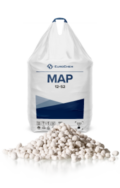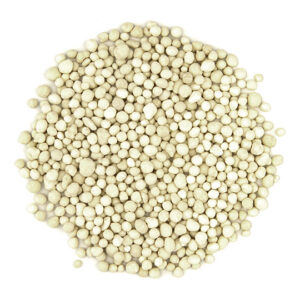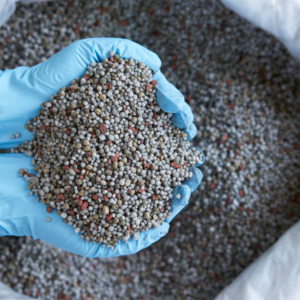Monoammonium phosphate (MAP)
Monoammonium phosphate (MAP) is a widely used source of phosphorus (P) and nitrogen (N) It’s made of two constituents common in the fertilizer industry and contains the most phosphorus of any common solid fertilizer.
Chemical Properties:
Chemical Formula: NH₄H₂PO₄.
P₂O₅ Range: 48-61% .
N Range: 10-12% .
Water Solubility (20°C): 370 g/L,
Solution pH: 4 to 4.5.
Agricultural Use:
MAP has been an important granular fertilizer for many years. It is water soluble and dissolves rapidly in adequately moist soil. Upon dissolution, the two main components of the fertilizer separate again to release ammonium (NH₄⁺) and phosphate (H₂PO₄⁻), both of which plants depend on for healthy, sustainable growth.
The pH of the solution surrounding the granules is moderately acidic, making MAP a particularly desirable fertilizer in neutral and high pH soils.
Agricultural studies show that there is no significant difference in phosphorus nutrition between different commercial phosphorus fertilizers under most conditions.
Granular MAP is applied by farmers in concentrated bands below the soil surface near the growing roots or in surface bands. It is also commonly applied by spreading it across the field and mixing it into the surface soil by tillage.
In powder form, MAP is an important component of suspension fertilizers. Especially when made with high-purity phosphoric acid (H₃PO₄), it dissolves readily into a clear solution that is distributed as a foliar spray or added to irrigation water. The phosphorus pentahydrate (P₂O₅) content is typically 61 percent.
Non-agricultural uses:
MAP is used in dry chemical fire extinguishers commonly found in offices, schools, and homes. The MAP extinguishing spray disperses a fine powder, which coats the fuel and quickly extinguishes the flames.








